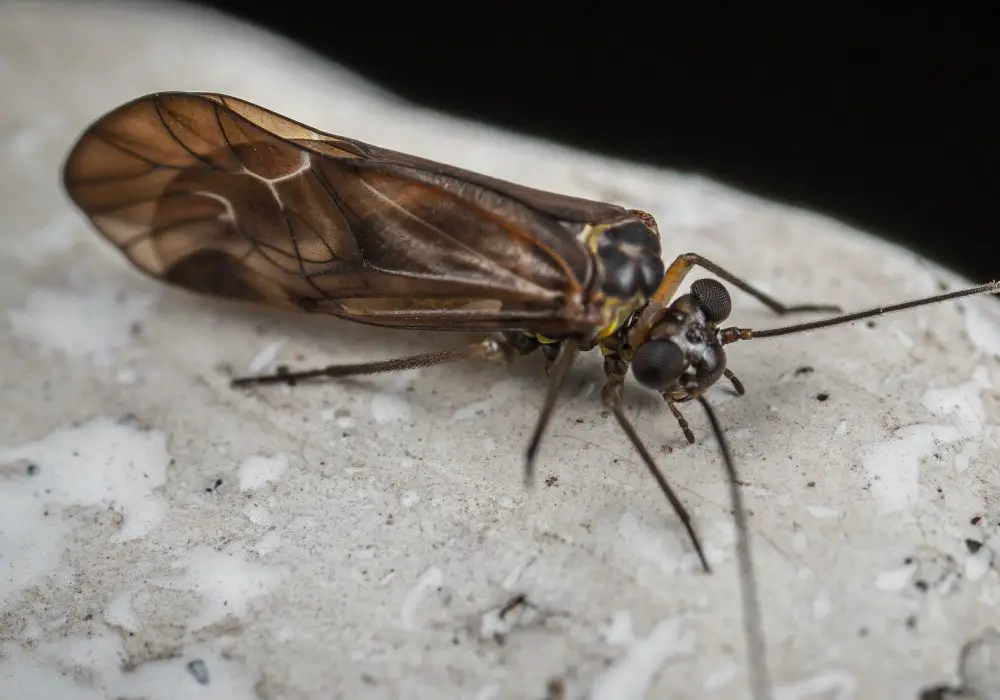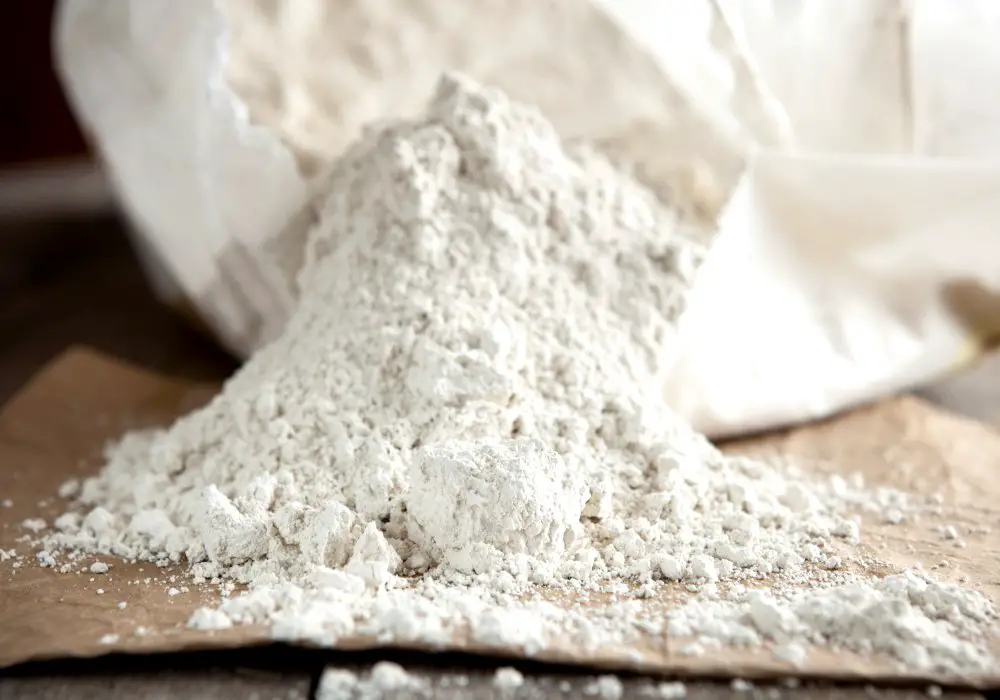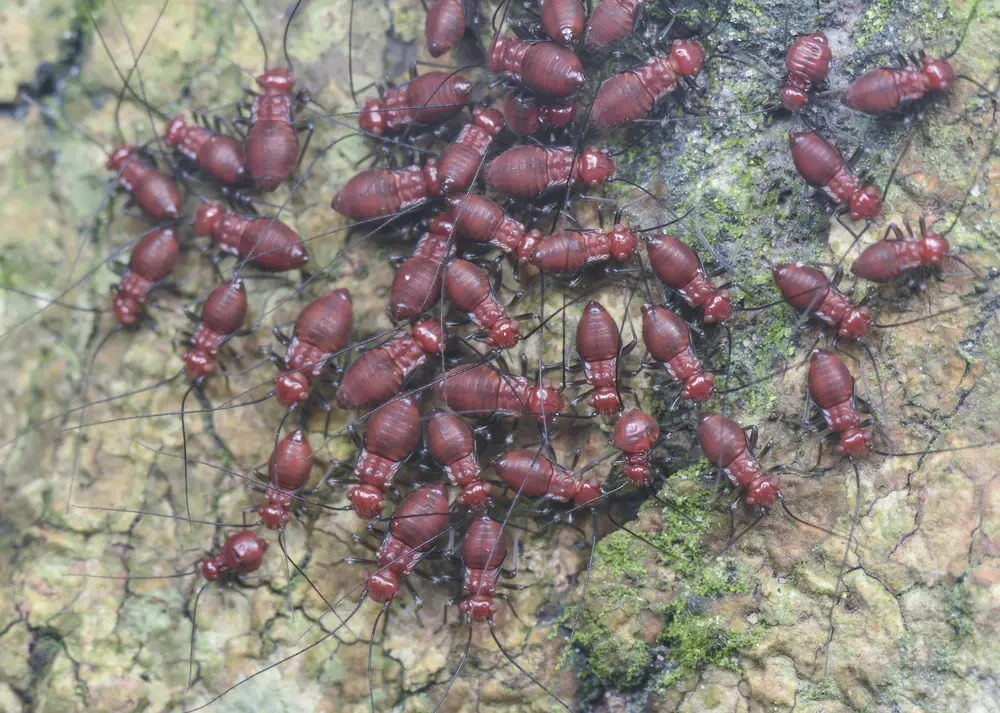Discovering tiny invaders crawling on your wall is a sight that can send shivers down any homeowner’s spine. These minuscule creatures, often mistaken for common pests, are booklice.
While their name might suggest a penchant for literature, they’re more interested in the starches and molds found on walls and other surfaces.
Despite their small size, booklice can be a big nuisance. Their presence indicates a larger issue: excess moisture.
If left unchecked, these tiny pests can rapidly multiply, turning a minor problem into a full-blown infestation.
Understanding Booklice
Booklice Appearance
Booklice, also known as psocids, are small insects that can be found in various indoor environments. Identifying these pests is essential for effective treatment.
Adult booklice typically measure between 1 to 2 millimeters in length, with a pale or translucent body color. Their antennae are long and thread-like, while some species have wings, though they are often wingless.
Different Species of Booklice

There are more than 5,000 known species of booklice belonging to the order Psocoptera. However, only a few species are commonly found indoors and infest homes or other buildings.
Identifying the specific species of booklouse you’re dealing with can help determine the most effective control measures.
Feeding Habits of Booklice
Booklice feed on various organic materials, such as fungi, algae, and mold. They thrive in damp and humid environments where these food sources are abundant.
It is essential to understand their feeding habits to prevent infestations and maintain a clean, dry environment in your home.
Identifying Infestations
Detecting Booklice at Home
To identify a booklice infestation in your home, start by examining walls, especially in areas with higher humidity and moisture levels. Booklice thrive in damp environments, so you may spot them on walls with mold or mildew.
Look for tiny, light-colored bugs often found in crevices and cracks.
Checking Moist and Damp Areas
It’s essential to inspect moist and damp areas in your home, as these spots are where booklice are most likely to congregate.
Pay special attention to places like:
- Bathrooms
- Basements
- Kitchens
- Laundry rooms
Check for any signs of mold or mildew, and observe closely for the presence of booklice in these areas.
Inspecting Books and Paper Products
Booklice can infest various paper products, including books, newspapers, and cardboard.
If you suspect an infestation, make sure to inspect your books and other paper items thoroughly. Look for them between the pages, along the bindings, and around the edges of the items.
Additionally, you might notice tiny, transparent eggs in crevices, which indicate a growing infestation.
Preventing Booklice Infestations
Controlling Humidity
To prevent booklice infestations, controlling humidity is crucial. High humidity levels can create a conducive environment for booklice to thrive. To reduce humidity in your home, you can use a dehumidifier or an air conditioner.
These appliances will help maintain an ideal humidity level below 50%. If you have crawl spaces, consider placing a heavy plastic barrier on the floor to prevent moisture from seeping in.
This will keep the area dry and less hospitable for booklice.
Ventilation and Airflow Management
Proper ventilation and airflow management are essential for preventing booklice infestations. Ensure your living space has sufficient ventilation by periodically opening windows and doors. This will help to circulate air and reduce humidity levels.
Additionally, fans can improve airflow in areas with limited ventilation, such as basements or attics. Remember to install exhaust fans in moisture-prone areas like bathrooms and kitchens to further prevent the build-up of moisture.
- Ventilate: Open windows and doors regularly
- Fans: Use fans to improve airflow
- Exhaust fans: Install exhaust fans in moisture-prone areas
Inspecting and Sealing Leaks
Inspect your home for any water leaks, which can increase humidity levels and provide a breeding ground for booklice.
Places to check include pipes, faucets, and roofs. If you discover any leaks, seal them promptly to prevent water damage and discourage booklice infestations. Additionally, store items like books and papers in plastic containers with tight-fitting lids to keep them dry and less attractive to booklice.
Treating Booklice Infestations

Natural Methods
To get rid of booklice, start with removing clutter and vacuuming regularly. This helps eliminate their food sources and habitats. Keep your home dust-free, paying special attention to the walls where booklice might be hiding.
For items that can be placed in the freezer, such as books, freeze them for at least 48 hours. The cold temperature kills the booklice.
You may also use natural treatments such as borax, diatomaceous earth, or silica gel. Borax should be mixed with water and applied directly to the affected areas.
Diatomaceous earth can be sprinkled on the wall and surrounding surfaces, while silica gel can absorb excess moisture, creating an unfavorable environment for booklice.
Chemical Treatment
If natural methods are insufficient to control the infestation, consider using specially formulated insecticides. Make sure to choose a pesticide specifically designed for booklice treatment. Follow the manufacturer’s instructions for use and application.
When using chemical treatments, it is essential to:
- Wear gloves and protective clothing
- Avoid contact with skin or eyes
- Keep children and pets away from treated areas until they are safe
The use of chemicals should always be a last resort, and it’s crucial to apply them responsibly.
- KILLS & REPELS. A preventative and a treatment, this plant-powered insect spray kills and repels indoor pests and keeps your home protected. Kills flying, crawling, biting and stinging pests including…
- PROTECT YOUR HOME. This versatile bug control spray is also an indoor flea treatment and flea killer for your home. It kills adult fleas on household surfaces including carpet, furniture, bedding and…
- SAFE AROUND PETS & FAMILY WHEN USED AS DIRECTED. This spray is safe for daily use around dogs, cats, and family throughout the house when used as directed, yet powerful enough to fully eliminate pests…
Professional Pest Control Services
In severe cases, calling a professional pest control service may be necessary. Professionals have access to stronger treatments and can effectively get rid of booklice, ensuring the safety of your living area.
Effect of Booklice on Individuals and Homes
Booklice and Health Concerns
Booklice can be a nuisance in your home, but they are not known to bite or transmit diseases to humans. However, their presence could indicate high humidity levels, leading to mold growth.
Molds can cause various health issues, particularly for people who suffer from allergies or asthma. When mold spores are inhaled, they can trigger allergic reactions, exacerbate asthmatic symptoms, or cause respiratory illnesses.
To minimize the risk of health problems related to mold exposure, it is essential to address the increased humidity that is attracting booklice.
Be sure to regularly check damp or dark areas of your home for mold growth and ensure adequate ventilation to prevent further infestations.
Impact on Home Infrastructure
While booklice do not cause direct damage to your home’s infrastructure, their presence is a sign that moisture levels are high in certain areas.
This excess moisture can lead to various problems, such as:
- Mold growth: High humidity creates favorable conditions for mold to thrive on walls, ceilings, and other surfaces. Over time, mold can cause structural damage and negatively affect your home’s indoor air quality.
- Damage to materials: Increased moisture levels can lead to the deterioration of materials such as wood, wallpaper, and fabrics. This can cause damage to furnishings, decorations, and the overall integrity of your home.
- Potential pest infestations: Apart from booklice, other pests such as termites, cockroaches, and rodents are also attracted to damp conditions. These pests can cause significant damage to your home and pose health risks to those living in it.
Common Locations of Infestations
Indoor Infestation Hotspots
Booklice are typically found in damp and warm areas of your home. These tiny pests feed on mold and mildew, so they gravitate towards environments that favor fungal growth.
Some common indoor locations include:
- Books: Booklice are particularly attracted to older and vintage books. They can be found nestled between the pages or along the spine, feasting on the glue and mold that may have accumulated in these old books.
- Wallpaper: If your walls have wallpaper, booklice can hide behind it. The glue used in wallpapers can provide an appealing food source for these tiny creatures.
- Kitchen: Since booklice need moisture to survive, your kitchen can be an ideal location. Be sure to check your stored food, especially if it’s stored in moist or humid areas.
- Plants: Houseplants create natural humidity and can attract booklice if the moisture levels are high. Carefully inspect the leaves, stems, and soil of all your indoor plants.
- Windows and windowsills: Condensation on your windows can create small pockets of moisture, making windowsills a hotspot for booklice to thrive.
Outdoor Infestation Sites
Booklice can also be found in various outdoor locations, including:
- Eaves: Your home’s eaves can provide shelter and moisture from rain, creating a perfect environment for booklice to grow. Be sure to inspect these areas regularly and remove debris, such as leaves and twigs, to minimize the occurrence of infestation.
- Near plants: Booklice often inhabit areas around outdoor plants and can be found on leaves, stems, and in soil. Inspect your plants regularly to prevent booklice infestations from spreading indoors.



